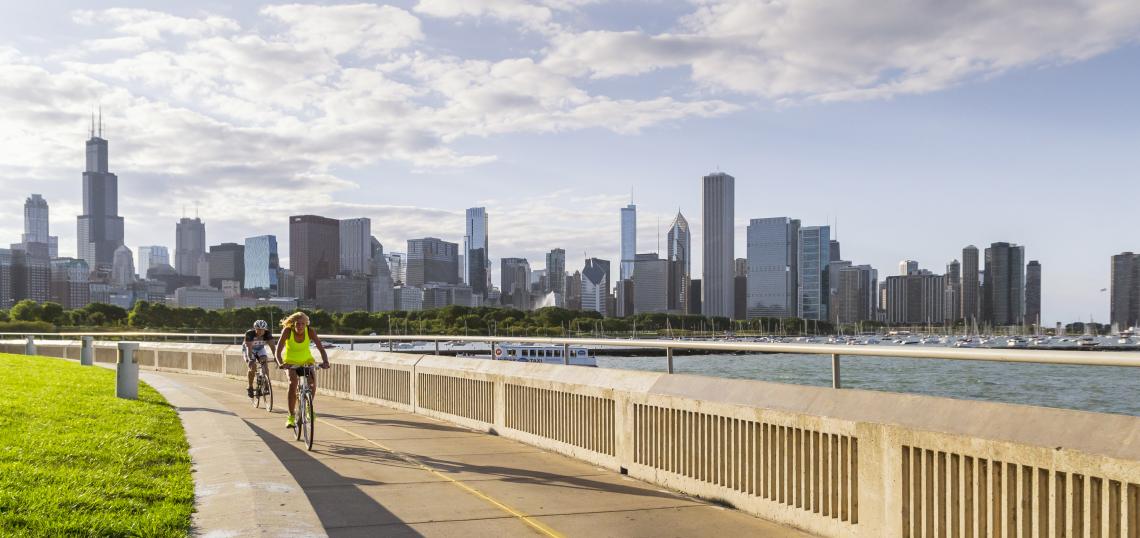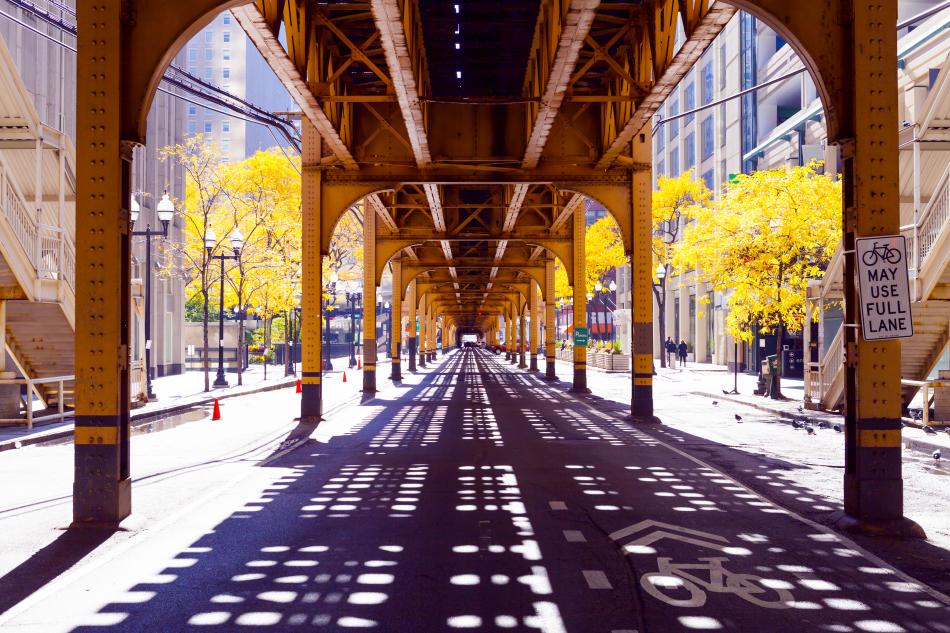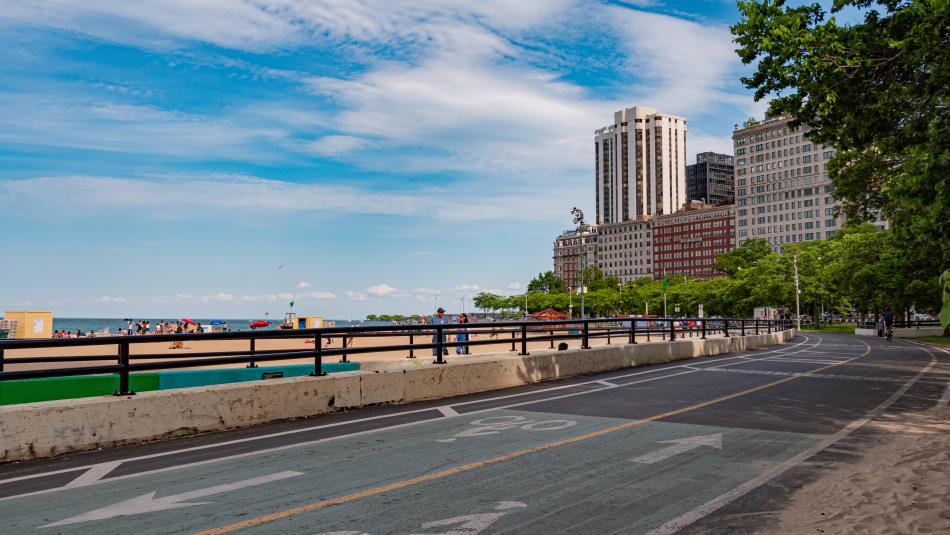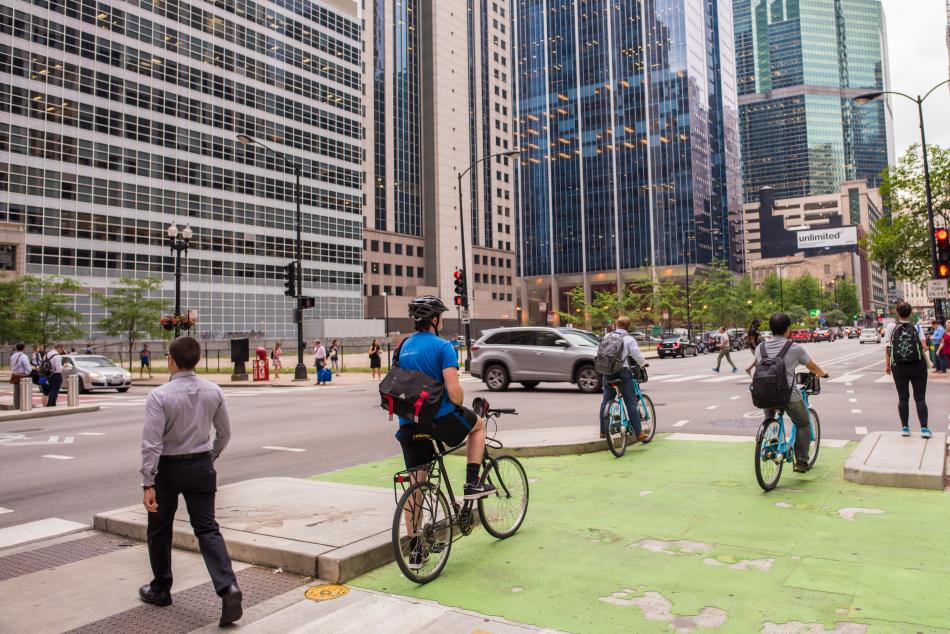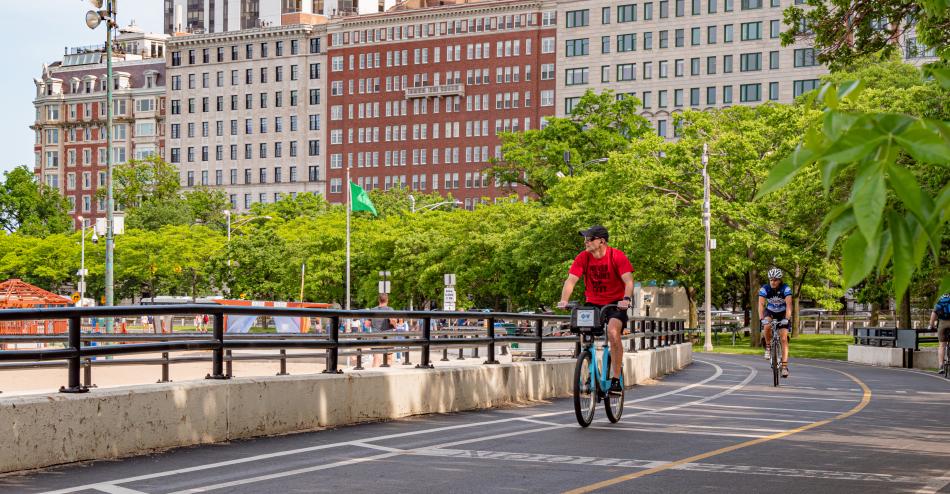Mayor Lori E. Lightfoot joined Aldermen Hopkins, La Spata, Martin, Reilly, and Vasquez to introduce to City Council a new measure that aims to improve traffic safety, enhance protections for pedestrians and bicyclists, and speed up public transportation.
The Smart Streets Pilots Ordinance would establish two small-scale pilots downtown that use existing infrastructure and new technology to enforce parking violations, such as cars parked in bike lanes, bus-only lanes, bus stops, and crosswalks, and enable camera enforcement for parking in commercial loading zones.
“As traffic fatalities have risen at an alarming rate both locally and nationally in recent years, it is critically important that Chicago use every tool available to improve safety for all road users,” said Chicago Mayor Lori E. Lightfoot. “That’s why we are proud to introduce an ordinance that will enable two pilots downtown to create safer streets and a better transit experience. By testing a small-scale pilot in 2023, the city will be better able to evaluate how these initiatives will work best when implemented on a citywide scale.”
Traffic fatalities have risen sharply in Chicago and in many other large cities since the start of the COVID-19 pandemic, with Chicago’s annual fatalities in 2021 more than 50% higher than in 2019. In 2021 alone, more than 170 people were killed in traffic crashes in Chicago.
The Smart Streets Ordinance will encourage safer driver behavior and better parking compliance with the goal of reducing crashes and creating safer streets. The ordinance would establish two two-year pilot programs within the boundaries of Lake Michigan to Ashland Avenue and from North Avenue to Roosevelt.
Smart Streets Pilot
This first pilot would authorize the city to ticket registered vehicle owners by mail for various infractions, including parking in bike lanes, bus-only lanes, crosswalks, bus stops, and no parking zones. This pilot would discourage drivers from illegally parking in places that put our most vulnerable road users — people walking, biking, rolling, and taking transit — in dangerous situations, such as forcing bicyclists to merge with motor vehicle traffic.
This pilot would also promote a more reliable, efficient, and accessible bus service by deterring drivers from parking in bus-only lanes or at designated bus stops. Chicago’s growing bus priority network is key to combating congestion, providing equitable rapid transit, and lowering emissions. Free-flowing bus lanes without illegally parked or idling cars will improve rider experience and operational performance of Chicago Transit Authority (CTA) buses. Additionally, parked cars at bus stops create challenges and sometimes hazardous conditions for riders with disabilities when buses are blocked from accessing the curb.
The ordinance allows for cameras to be fixed on city poles or on the front of city or CTA vehicles. Once data is collected, it will be individually reviewed and then sent to the Department of Finance (DOF) to be processed. When the city begins camera enforcement of parking or standing violations in areas with posted signs, the ordinance proposes a 30-day warning period for first-time violators, and anyone ticketed within 30 days of the installation of a new camera.
Through the Clear Path Relief program, low-income drivers will continue to be eligible for reduced-priced tickets and other vehicle related debt relief.
Smart Loading Zone Pilot
This second pilot would use license plate reading camera technology to facilitate more efficient driver or company payment and to enforce parking violations within commercial loading zones designed for the loading and unloading of commercial vehicles. The pilot aims to prevent double-parking that puts drivers, bicyclists, and pedestrians in unsafe conditions, decrease vehicle idling and reduce emissions, and create a more efficient system for payment and drop-offs for commercial drivers.
The introduction of this ordinance builds on actions by the Lightfoot Administration to keep Chicago’s streets safe through infrastructure investments and design. In 2022, CDOT implemented pedestrian safety improvements at approximately 400 intersections, including bump outs, curb extensions, and refuge islands. CDOT continued to expand and improve Chicago’s bikeway network, adding nearly 40 miles in 2022 and surpassing 100 miles added since Mayor Lightfoot took office. Last year, CDOT began a new program to upgrade all existing plastic-protected lanes to concrete curbs to provide increased safety for all road users.




